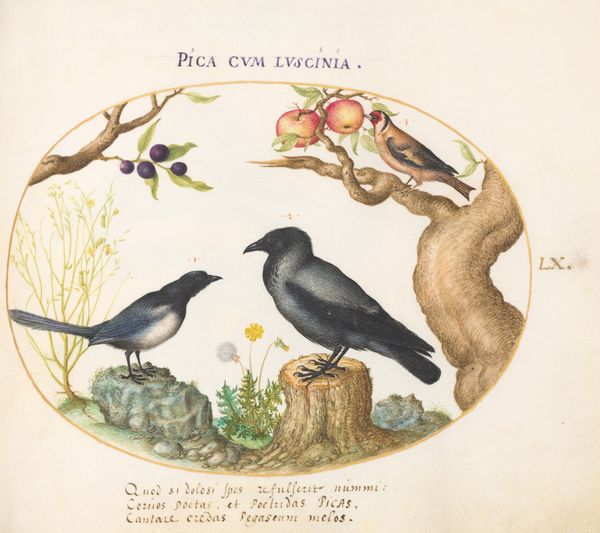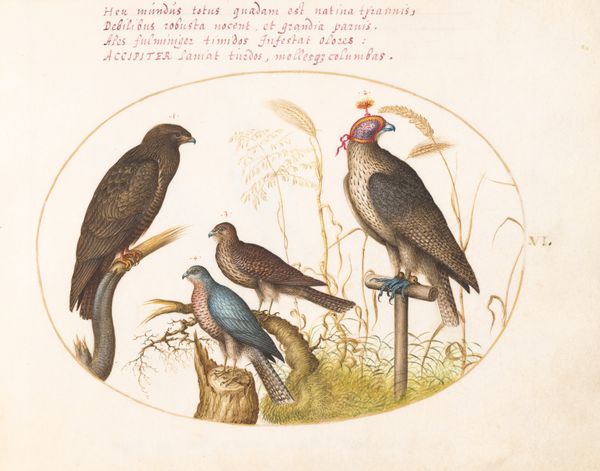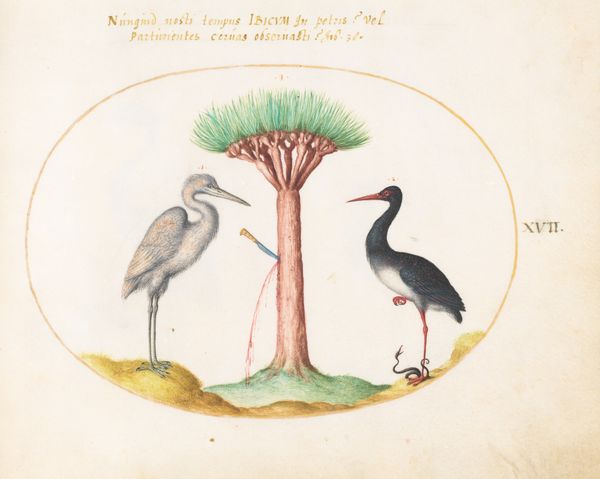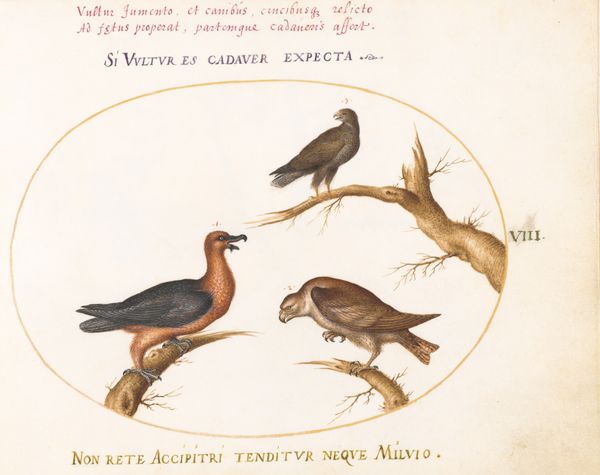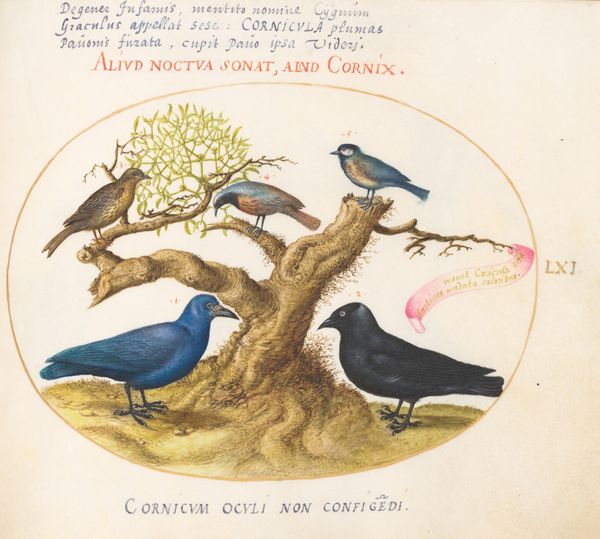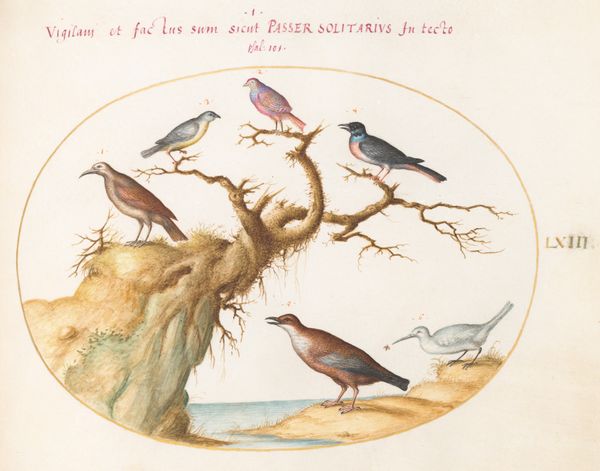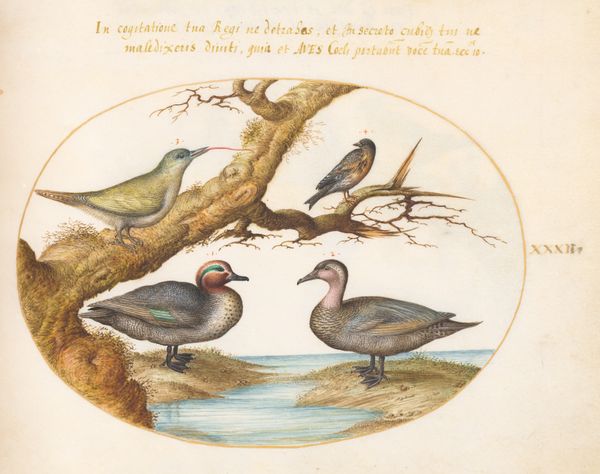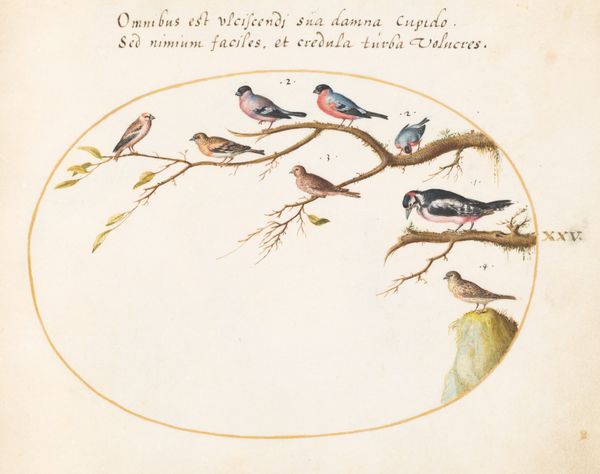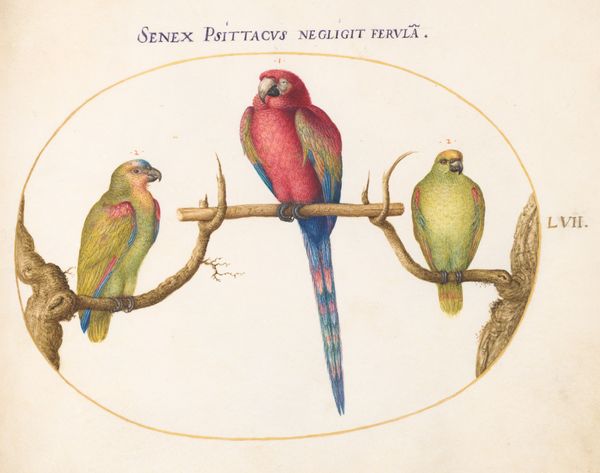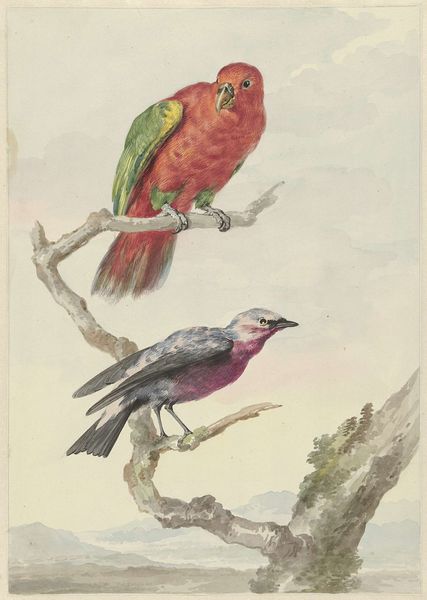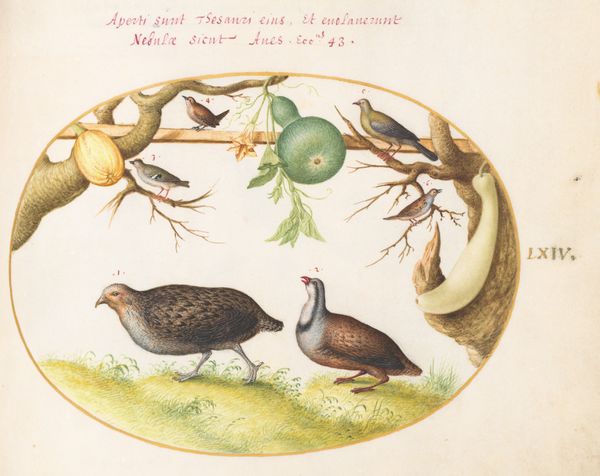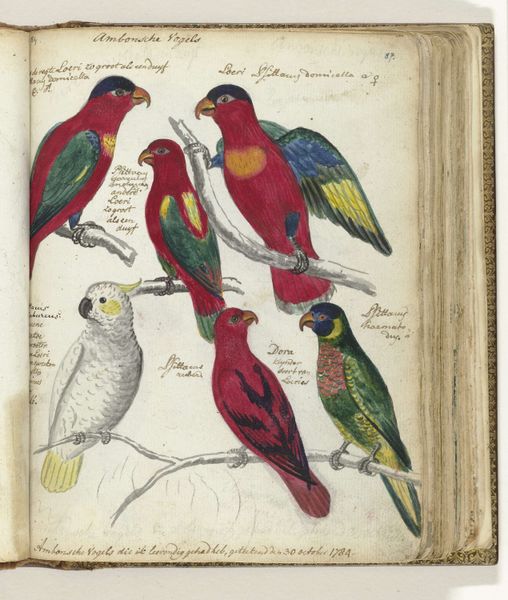
Plate 58: African Gray Parrot, Indian Ring-Necked Parrot, and a Third Parrot c. 1575 - 1580
0:00
0:00
drawing, coloured-pencil, watercolor
#
drawing
#
coloured-pencil
#
water colours
#
animal
#
11_renaissance
#
watercolor
#
coloured pencil
#
botanical drawing
Dimensions: page size (approximate): 14.3 x 18.4 cm (5 5/8 x 7 1/4 in.)
Copyright: National Gallery of Art: CC0 1.0
Curator: This watercolor and colored pencil drawing from around 1575-1580 by Joris Hoefnagel is titled "Plate 58: African Gray Parrot, Indian Ring-Necked Parrot, and a Third Parrot." It depicts three distinct parrot species within a detailed naturalistic setting. Editor: My first impression is of meticulous detail. There's a strange, almost detached quality to how each bird is rendered; it feels less like a portrayal of living creatures and more like an almost scientific study. The cool tones give it a reserved atmosphere, despite the parrots' vibrant plumage. Curator: Exactly, I see it as a representation of the era's expanding global awareness. During the Renaissance, the natural world became a site for demonstrating the extent of exploration and colonialism, which manifested as these types of artworks that celebrated that moment in time. The parrots themselves, as exotic imports, symbolized power and wealth. Editor: The precise execution speaks volumes about the artist’s dedication to representing the textures of feathers and bark and highlights a specific skill. Also note the placement of the birds in the composition—their position on various levels grounds them together and sets them apart from their respective species. I am struck by the social stratification this represents! Curator: Absolutely. The choice to isolate them reinforces their commodified value. Their removal from their natural habitats places them within a social hierarchy, where their exoticism becomes a currency of prestige within Europe at the time. In our contemporary analysis, it's important to underscore this perspective to reexamine traditional views of art history through critical lenses. Editor: I find myself wondering about Hoefnagel's sources. Were these parrots kept nearby? Or did he base them on second-hand accounts? That distinction shifts how we see the entire artwork in terms of labor and accessibility of exotic items. Curator: These are the very kinds of discussions art demands—where contemporary ideas influence our interaction with the past. Thank you for sharing those very precise thoughts and your own point of view that offers critical views in art interpretations. Editor: Thank you; it is crucial that the role of artistic and scientific investigation as expressions of power are recognized in a work that otherwise strikes the contemporary eye as quaint and even unassuming.
Comments
No comments
Be the first to comment and join the conversation on the ultimate creative platform.
